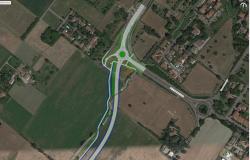In Italy a farmhouse out of five are found in Tuscany. Twenty percent of Italian structures are located in our region, which has increasing data and in contrast with the rest of the nation. And almost half of Tuscan farmhouses it is led by a woman, a sign that female entrepreneurship in tourism is also on the rise. The Tuscan farmhouse, therefore, is healthy.
To underline it is Hello Tuscany, who extrapolated the data presented by Irpet Tuscany. In fact, in our region there are 5,634 agritourism structures, and compared to 2010 increased by 7.3%, the numbers go against the national trend and that of other agricultural companies, in Tuscany there is evidently a desire for agritourism. 48% of agritourism facilities in Tuscany are run by a woman, another fact that Cia looks at with interest in view of the future.
How many beds are there in total in Tuscany?
Over 80 thousand, for an average of around three hundred per municipality, distributed across almost 42 thousand rooms and 2.2 thousand pitches. The province with the most agritourisms, also helped by the conformation of its countryside, is that of Siena with 1,265 structures; it is followed closely by Grosseto, with 1,248. Florence is third at 838, Arezzo fourth at 704, closes the top five the province of Pisa with 545. The areas with the most agritourism structures are the Val d’Orcia, the internal areas of the Inner Maremma, in Val di Cecina and in some municipalities of the Chianti Classico. According to Cia Toscana “Grosseto seems predominantly specialized in accommodation, while Siena And Florence in tasting and catering. Lucca shows activities linked to the valorization of natural capital”.
What do the services of agritourism activities offer?
For the majority, 17.6%, there is the possibility of trekking; 14.9% mountain biking; 12.8% excursions; 12.4% are educational farms; alongside all this we also find activities such asequitation and courses of various types.
Cia Toscana also provides the answer to another question: can agritourism activities combat the abandonment of agricultural land? Thus Franco Masotti, president of Turismo Verde Cia Toscana: “Agritourism is able to give added value to farms and territories thanks to its multifunctionality”. Valentino Berni, president of Cia Toscana, adds: “Agritourism is a fundamental activity for Tuscan agriculture as it is worth employment and income for companies. During Covid in the most suitable areas the agritourism sector has held up, representing one of the few forms of tourism possible.”






